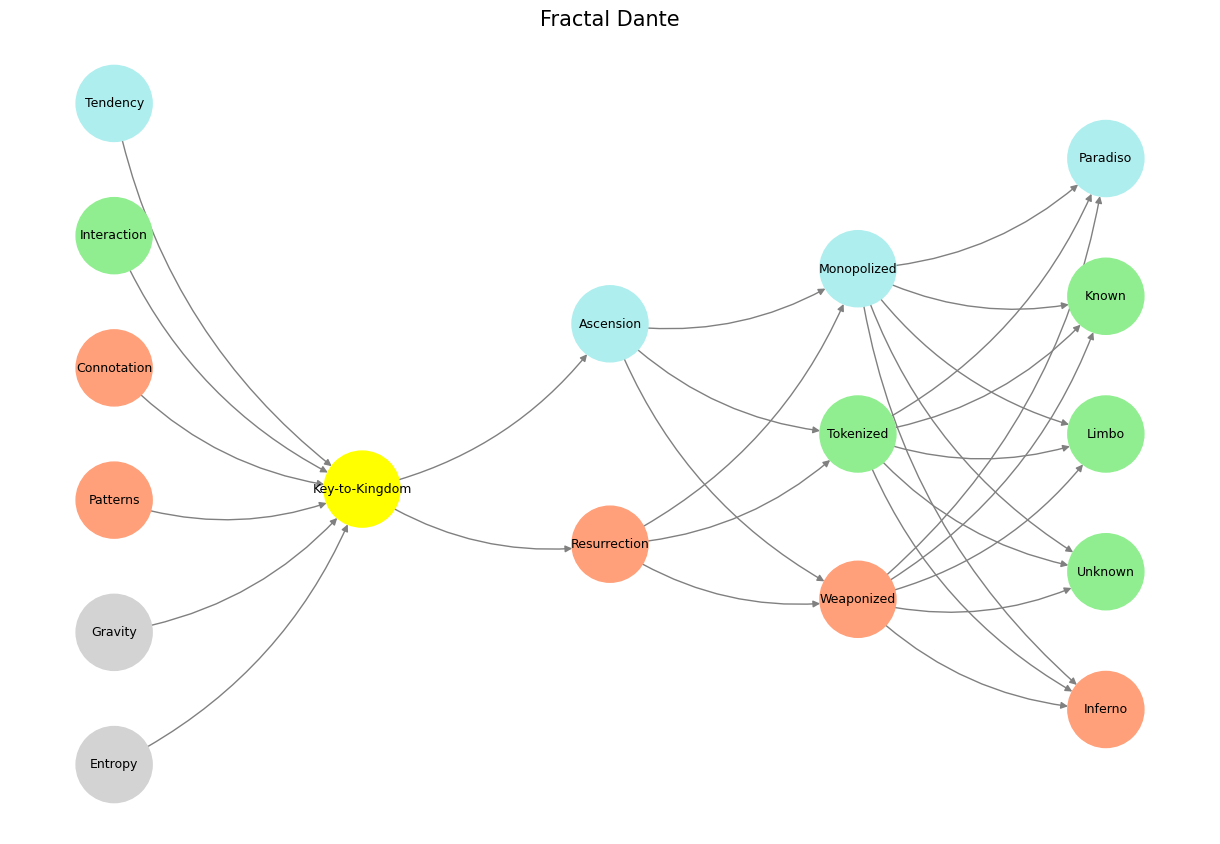System#
Ruud van Nistelrooy’s style of play can be restructured through the lens of the neural network framework you provided, organizing his attributes into layers that reflect a deeper, interconnected system of understanding. This approach reveals his artistry not merely as a striker but as an embodiment of various forces at play in football.
World Layer: Patterns and Connotation#
Van Nistelrooy’s game was grounded in an intuitive understanding of patterns and connotations within the flow of the match. His ability to read defensive tendencies and predict the trajectory of the ball gave him a near-mystical edge, almost as if he saw the game unfolding seconds ahead of everyone else. This quality speaks to the entropy of football—its unpredictability—and his mastery in bringing order to this chaos, converting loose balls and rebounds into inevitable goals.
Perception Layer: Key-to-Kingdom#
Central to Van Nistelrooy’s brilliance was his uncanny spatial awareness—his key to the kingdom. He had a predator’s instinct for positioning himself in the perfect spot at the perfect moment, turning half-chances into certainties. His perception was not just reactive but generative, as he created opportunities by anticipating the defense’s errors and exploiting gaps with surgical precision.
Agency Layer: Resurrection and Ascension#
Van Nistelrooy’s career, marked by comebacks from injury and moments of redemption, aligns with the concepts of resurrection and ascension. He played with a relentless drive that epitomized these qualities, rising above challenges and consistently delivering on the biggest stages. His composure in high-pressure moments, such as penalties, highlighted his ascension to the upper echelons of football, where his agency over the game’s outcome became almost absolute.
Generative Layer: Weaponized and Tokenized#
The striker’s skills can be understood as weaponized precision, with his goals being the sharpest tools in his arsenal. Van Nistelrooy was not a creator in the traditional sense but a tokenized force—a specialist who embodied the singular purpose of scoring. His contribution to the team was distilled to its essence: putting the ball in the back of the net, often in the simplest yet most effective manner.
Physical Layer: Known, Unknown, Limbo, Inferno, and Paradiso#
Van Nistelrooy’s style oscillated between the known and the unknown, as he operated in the liminal spaces of the limbo between defenders, often invisible until it was too late. He thrived in the paradiso of the penalty box, where his finishing brought moments of transcendence, but his physical battles with defenders were often an inferno of grappling and perseverance. His capacity to navigate these extremes made him a uniquely dynamic striker, as much a craftsman as a warrior.
This neural network-inspired framework allows us to appreciate Van Nistelrooy not just as a prolific striker but as a complex, multifaceted force. His mastery of football’s layers—from the chaos of entropy to the transcendence of paradiso—cements his legacy as one of the greatest goal-scorers the game has ever seen.
Show code cell source
import numpy as np
import matplotlib.pyplot as plt
import networkx as nx
# Define the neural network fractal
def define_layers():
return {
'World': ['Entropy', 'Gravity', 'Patterns', 'Connotation', 'Interaction', 'Tendency', ], # Cosmos, Planet
'Perception': ['Key-to-Kingdom'], # Life
'Agency': ['Resurrection', 'Ascension'], # Ecosystem (Beyond Principal-Agent-Other)
'Generative': ['Weaponized', 'Tokenized', 'Monopolized'], # Generative
'Physical': ['Inferno', 'Unknown', 'Limbo', 'Known', 'Paradiso'] # Physical
}
# Assign colors to nodes
def assign_colors():
color_map = {
'yellow': ['Key-to-Kingdom'],
'paleturquoise': ['Tendency', 'Ascension', 'Monopolized', 'Paradiso'],
'lightgreen': ['Interaction', 'Tokenized', 'Known', 'Limbo', 'Unknown'],
'lightsalmon': [
'Patterns', 'Connotation', 'Resurrection', # Ecosystem = Red Queen = Prometheus = Sacrifice
'Weaponized', 'Inferno'
],
}
return {node: color for color, nodes in color_map.items() for node in nodes}
# Calculate positions for nodes
def calculate_positions(layer, x_offset):
y_positions = np.linspace(-len(layer) / 2, len(layer) / 2, len(layer))
return [(x_offset, y) for y in y_positions]
# Create and visualize the neural network graph
def visualize_nn():
layers = define_layers()
colors = assign_colors()
G = nx.DiGraph()
pos = {}
node_colors = []
# Add nodes and assign positions
for i, (layer_name, nodes) in enumerate(layers.items()):
positions = calculate_positions(nodes, x_offset=i * 2)
for node, position in zip(nodes, positions):
G.add_node(node, layer=layer_name)
pos[node] = position
node_colors.append(colors.get(node, 'lightgray')) # Default color fallback
# Add edges (automated for consecutive layers)
layer_names = list(layers.keys())
for i in range(len(layer_names) - 1):
source_layer, target_layer = layer_names[i], layer_names[i + 1]
for source in layers[source_layer]:
for target in layers[target_layer]:
G.add_edge(source, target)
# Draw the graph
plt.figure(figsize=(12, 8))
nx.draw(
G, pos, with_labels=True, node_color=node_colors, edge_color='gray',
node_size=3000, font_size=9, connectionstyle="arc3,rad=0.2"
)
plt.title("Fractal Dante", fontsize=15)
plt.show()
# Run the visualization
visualize_nn()


Fig. 21 Psilocybin is itself biologically inactive but is quickly converted by the body to psilocin, which has mind-altering effects similar, in some aspects, to those of other classical psychedelics. Effects include euphoria, hallucinations, changes in perception, a distorted sense of time, and perceived spiritual experiences. It can also cause adverse reactions such as nausea and panic attacks. In Nahuatl, the language of the Aztecs, the mushrooms were called teonanácatl—literally “divine mushroom.” Source: Wikipedia#

